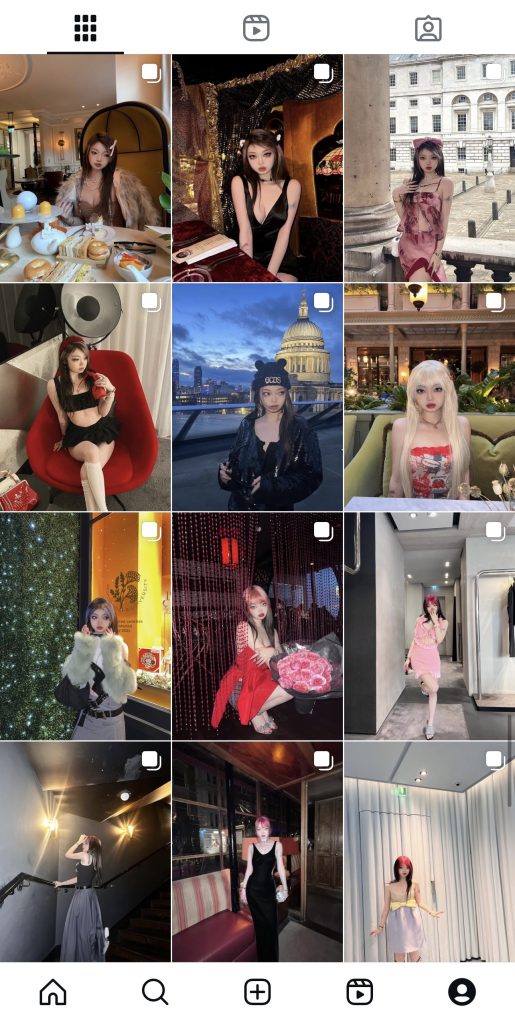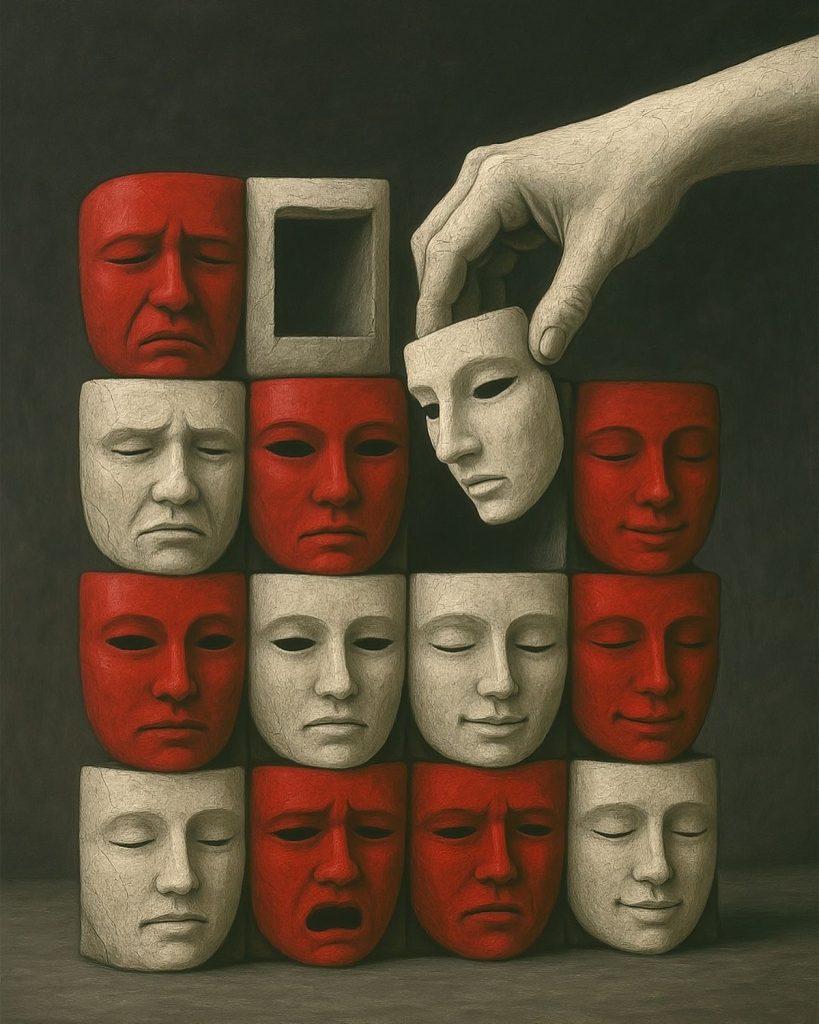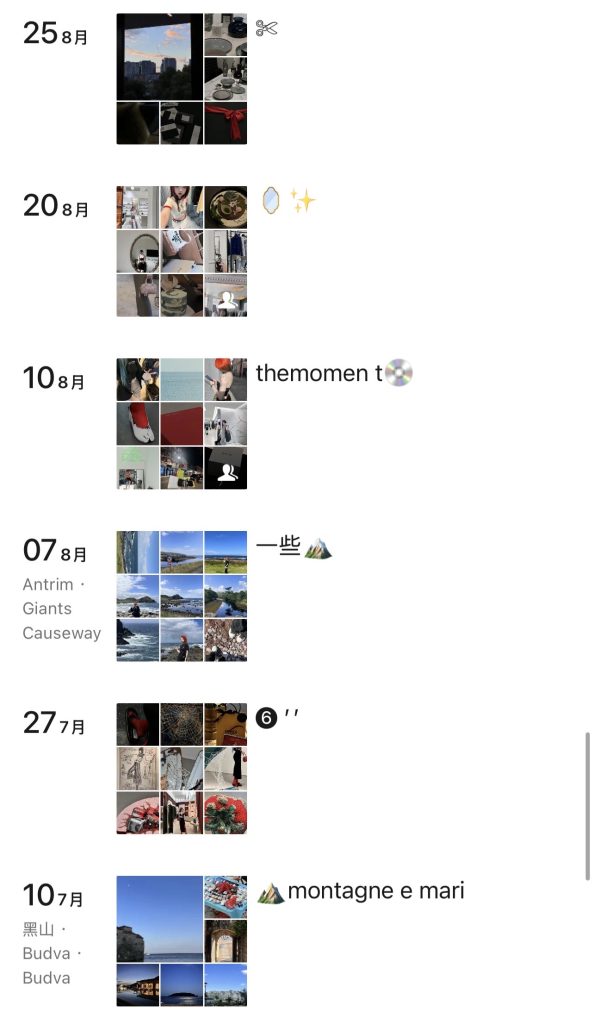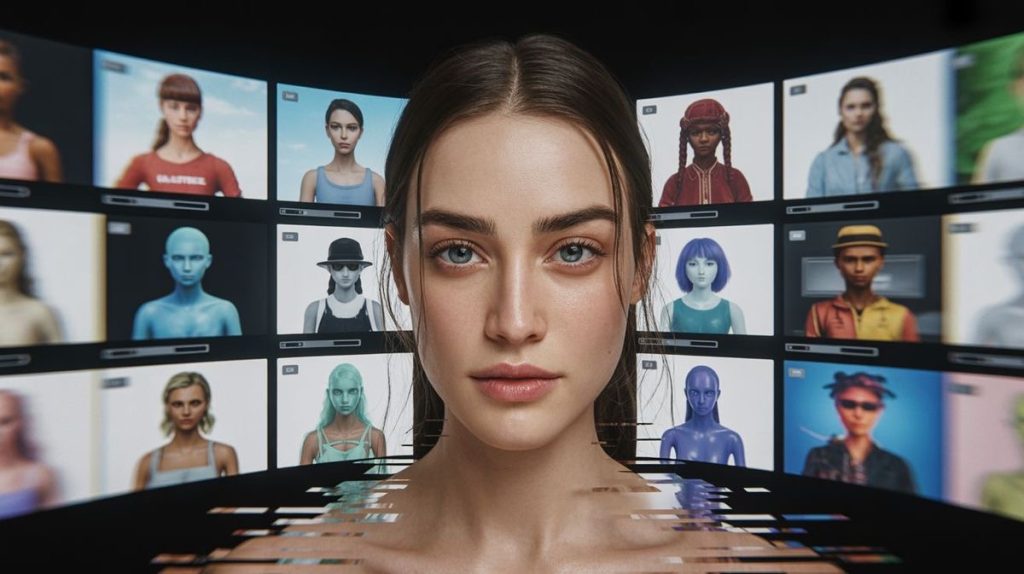In a world where likes, filters, and algorithms quietly sculpt our digital lives, the question of who we really are online becomes more complicated than ever. Each post, caption, and profile photo is a small act of self-construction—part authentic expression, part strategic performance. Are we curating our true selves, or performing the versions of us that platforms reward? Drawing on ideas from Goffman, Turkle, and boyd, this reflection explores how identity in the digital age is both self-fashioned and system-shaped, revealing the delicate dance between authenticity and algorithmic influence.

In today’s hyperconnected era, our identities are increasingly shaped not only by who we are offline, but also by how we choose to perform ourselves online. Goffman’s (1959) theory of The Presentation of Self in Everyday Life provides a useful lens for understanding this phenomenon. Just as people “perform” roles in face-to-face interactions, social media platforms have become new stages for identity performance, where we consciously curate profiles, posts, and even moods to align with the audiences we imagine. However, while Goffman’s framework helps explain the performative nature of digital identity, it struggles to capture the algorithmic influences that now mediate our self-presentation—an issue more effectively addressed by scholars such as danah boyd (2014), who explores the interplay between visibility, persistence, and context collapse in digital spaces.

Screenshot 
Screenshot


Screenshot 
Screenshot
Reflecting on my own online presence, I notice how I construct slightly different versions of myself across platforms. On LinkedIn, my identity is professional and achievement-oriented; on Instagram, it leans toward aesthetics and personal expression. This aligns with Turkle’s (2011) notion of “The Tethered Self,” where our online and offline personas are intertwined yet fragmented. Initially, I believed that authenticity required a single, unified identity, but now I see value in this multiplicity—it allows adaptability and creativity in how I connect with diverse communities. Still, I question whether such flexibility also encourages superficiality:

Are we truly expressing ourselves, or merely performing what gains social validation?
From a critical standpoint, digital identity construction can empower marginalised voices by enabling self-definition beyond societal labels, yet it can also reproduce hierarchies through algorithmic biases and surveillance. The tension between empowerment and exposure calls for a more nuanced understanding of identity as both constructed and constrained in digital environments. Ultimately, our challenge is not just to curate identities but to cultivate digital self-awareness—to engage ethically, reflectively, and creatively in how we represent ourselves online.

References
boyd, d. (2014) It’s complicated: The social lives of networked teens. New Haven: Yale University Press. (Accessed 2 November 2025)
Goffman, E. (1959) The presentation of self in everyday life. New York: Doubleday Anchor Books. (Accessed 2 November 2025)
Turkle, S. (2011) Alone together: Why we expect more from technology and less from each other. New York: Basic Books. (Accessed 2 November 2025)


Loved that you mention the tension between authenticity and performance in our online lives. I also like what you said about the way we shift between platforms, adapting our image and tone.
I find so interesting to think about how much of that is genuine expression versus the pressure to fit into what the platform rewards. A really thoughtful exploration of what it means to “be ourselves” online today.
This was a fascinating read. Users often construct themselves in different ways in terms of our digital identity on various platforms. I notice from my own personal example I am much more formal and professional on apps like LinkedIn and more informal and relaxed in terms of my posts or content on Instagram for example. I think we need to question more the relationship between authenticity and performance on social media and what factors influence this. This was a very interesting exploration into this theory.
This article is exceptionally well written, combining theoretical depth with personal reflection. It demonstrates a mature critical awareness and a profound understanding of issues surrounding digital identity. The opening poses the question of “who we really are” in an elegant and thought-provoking tone, effectively drawing readers into the theme of digital self-construction while highlighting the tension between authenticity and algorithmic influence. The author skillfully applies the theories of Goffman, Turkle, and danah boyd, seamlessly integrating key concepts such as “self-presentation,” “the tethered self,” and “context collapse,” making the analysis both academically rigorous and highly relevant to real-world experiences.
I found this post really interesting. I liked how you engaged the reader by getting them to think about the true self and posing the question of “who we really are”, it was extremely well written. From a blog post point of view the article is laced out in an interesting and engaging way, keeping readers hooked onto a somewhat confusing topic. Well done!
I found this post really interesting. From a blog post point of view the article is laced out in an interesting and engaging way, keeping readers hooked onto the topic. And the research you’ve done shows depth, while also remaining informing and interesting. Well done!